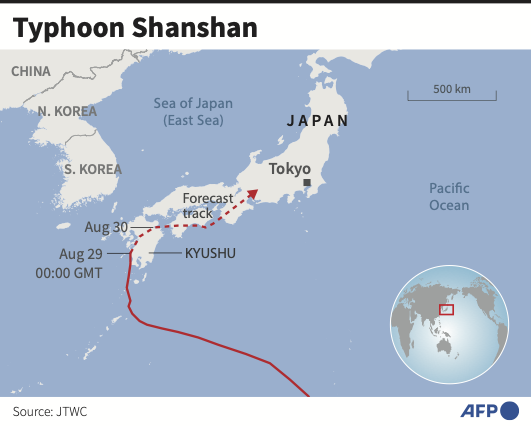WASHINGTON: US President Donald Trump has infuriated the Arab world by saying that Palestinians would not have the right of return to the Gaza Strip under his proposal to redevelop the enclave, which has been devastated by an Israeli offensive. From the earliest days of the Gaza war, Arab governments, particularly Egypt and Jordan, have said Palestinians must not be driven from land where they want to make a future state, which would include the occupied West Bank and Gaza. Trump first suggested on January 25 that Egypt and Jordan should take in Palestinians from Gaza, a proposal they strongly oppose. In a shock announcement on February 4, after meeting Israeli Prime Minister Benjamin Netanyahu in Washington, Trump proposed resettling Gaza’s 2.2 million Palestinians and the US taking control and ownership of the demolished seaside enclave, redeveloping it into the “Riviera of the Middle East.”
On February 10, he said Palestinians would not have the right of return to Gaza under his plan, contradicting his own officials who had suggested Gazans would only be relocated temporarily. Trump’s plan touches on one of the most sensitive issues in the Arab-Israeli conflict, the right of Palestinians to return. Trump, known as a tough dealmaker in his earlier career as a property developer in New York, said that he believed he could persuade Jordan and Egypt to take in displaced Palestinians. He also said Palestinians could be resettled in “much better housing.”
Many of Gaza’s buildings have turned into rubble since the war between Hamas and Israel erupted on October 7, 2023.
Trump’s plans are likely to heighten fears among Palestinians in Gaza of being driven out of the coastal strip, and stoke concern in Arab states that have long worried about the destabilising impact of any such exodus.
WHAT IS BEHIND THE CONCERNS?
Palestinians have long been haunted by what they call the “Nakba,” or catastrophe, when 700,000 of them were dispossessed from their homes during the war that surrounded the creation of Israel in 1948.
Many were driven out or fled to neighboring Arab states, including to Jordan, Syria and Lebanon, where many of them and their descendants still live in refugee camps. Some went to Gaza. Israel disputes the account that they were forced out.
Today about 5.6 million Palestinian refugees — mainly the descendants of those who fled — currently live in Jordan, Lebanon, Syria, the Israeli-occupied West Bank and Gaza. About half of registered refugees remain stateless, according to the Palestinian foreign ministry, many living in crowded camps.
Trump’s talk of resettling some two million Gazans is a nightmare for Jordan, which has long feared the mass expulsion of Palestinians from Gaza and the West Bank, and echoes a vision long propagated by right-wing Israelis of Jordan as an alternative Palestinian home.
The anxiety dates back to what is known as Black September. In 1970 the Jordanian army launched a huge offensive by that name to retake control of territory occupied by the Palestine Liberation Organization (PLO) in Jordan.
King Hussein, fearing the growing influence of Palestinian factions, cracked down on Palestinian nationalists. His generals ordered tanks into the capital Amman. Over 3,000 Palestinians were estimated killed and some 20,000 fled Jordan.
The latest conflict, currently paused amid a fragile ceasefire agreement, has seen an unprecedented Israeli bombardment and land offensive in Gaza, devastating urban areas.
Most Gazans have been displaced several times in Israel’s offensive, launched after the 2023 attack on Israel by Hamas that killed 1,200 people, according to Israeli tallies.
More than 48,000 people have been killed in Gaza since then, according to Palestinian health officials.
HOW HAVE PALESTINIANS MOVED DURING THIS CONFLICT?
Before Israel launched its offensive in 2023, it told Palestinians in north Gaza to move to what it said were safe areas in the south. As the offensive expanded, Israel told them to head further south toward Rafah, on the border with Egypt.
Later in the war, before launching a campaign in Rafah, it instructed them to move to a new designated humanitarian zone in Al-Mawasi, an area that stretches 12 km (7 miles) along the coast, starting from the western areas of Deir Al-Balah in central Gaza to Khan Younis and Rafah in the south.
According to UN estimates, up to 85 percent of the population of Gaza — one of the world’s most densely populated areas — have already been displaced from their homes.
COULD A MAJOR DISPLACEMENT FROM GAZA HAPPEN?
Many Palestinians in Gaza have said they would not leave the enclave even if they could because they fear it might lead to another permanent displacement in a repeat of 1948.
Egyptian authorities have publicly rejected the idea of displacement of Palestinians on human rights grounds.
The most populous Arab country would also be wary of hosting hundreds of thousands of Palestinians potentially including members of Hamas, after years of crackdowns on domestic Islamists such as the Muslim Brotherhood, which had close ties to Hamas.
Egyptian President Abdel Fattah El-Sisi has shown no tolerance for Islamists. He views them as an existential threat to his country and thousands of Islamist militants have been imprisoned.
WHAT HAVE ISRAEL’S GOVERNMENT AND ITS POLITICIANS SAID?
Israel’s then-Foreign Minister Israel Katz, now serving as defense minister, said on February 16, 2024, that Israel had no plans to deport Palestinians from Gaza. Israel would coordinate with Egypt on Palestinian refugees and find a way to not harm Egypt’s interests, Katz added.
However, comments by some in the Israeli government have stoked Palestinian and Arab fears of a new Nakba. Finance Minister Bezalel Smotrich has repeatedly called for a policy of “encouraging the migration” of Palestinians from Gaza and for Israel to impose military rule in the territory.
































